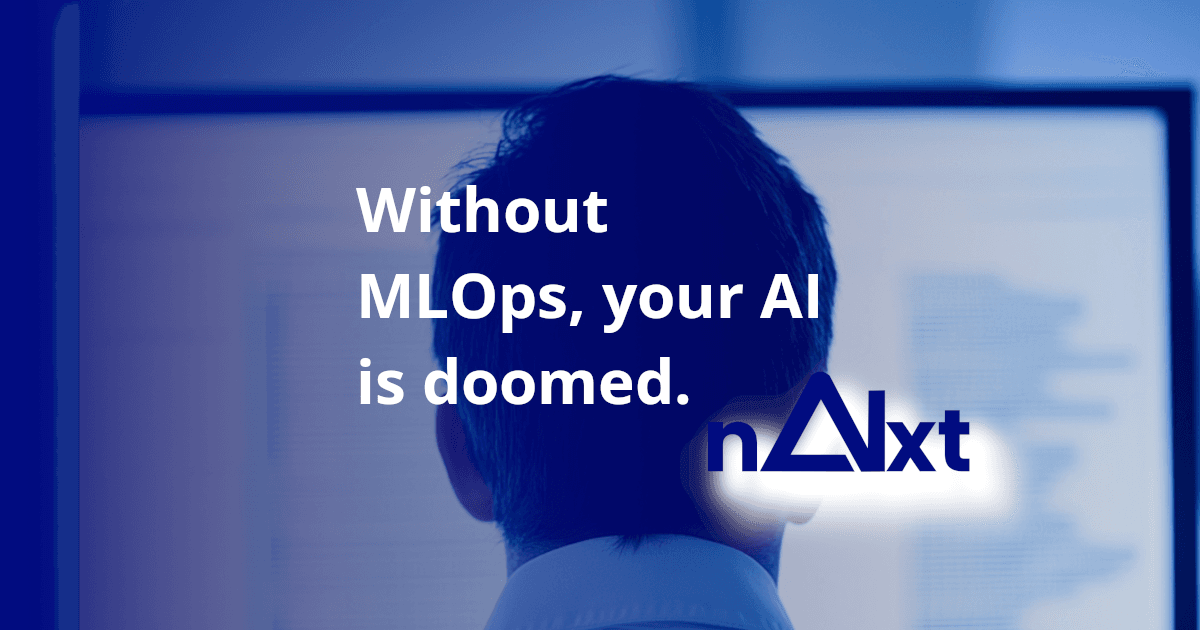Introduction
Over the last eight years, I've had a front-row seat to the rapid evolution of AI and how organizations approach these projects. I’ve seen the excitement and potential that AI brings, but I’ve also seen how often these projects hit roadblocks—especially when they’re managed like traditional software development. One of the biggest pitfalls? Not recognizing that AI development requires a different approach, one that goes beyond what traditional DevOps can offer. This is where MLOps comes in.
If you're finding that your AI projects aren't progressing as quickly as you'd like, you're not alone. Many organizations struggle with this, and the reason often boils down to how they're managing the development process. While DevOps has been the go-to approach for traditional software development, AI brings new challenges that require a shift to something more specialized—MLOps.
Let’s dive into why this transition from DevOps to MLOps is crucial and how it can help you get your AI projects back on track.

DevOps: A Solid Foundation Built on Iterations
DevOps has been a game-changer for software development. By combining development and operations into a smooth, iterative process, teams can continuously integrate, test, and deploy software with speed and reliability. It’s all about short, rapid cycles where you make a change, test it, and get it out the door quickly.
For teams that already have a solid DevOps process in place, moving into machine learning can be a more straightforward transition. The iterative, agile mindset central to DevOps is a great foundation for handling the complexities of AI development . However, it’s important to understand that this foundation alone is not a guarantee of success.
The following image shows the typical project lifecycle for MachineLearning (by nAIxt Technologies)
The Data Dimension: Where AI Changes the Game
Unlike traditional software, where your main focus is on the code, AI projects are driven by data. The quality and quantity of the data you feed into your models directly impact their performance. This means that your data, like your code, needs to be iterated on, refined, and improved over time.
But data is messy. It’s constantly changing, growing, and evolving. As you gather more data or improve your datasets, the outcomes of your AI models can change. This adds a whole new layer to the development process, one that DevOps wasn’t originally designed to handle.
In my experience, this is where many AI projects hit a wall. Teams that are used to traditional DevOps practices suddenly find themselves bogged down by the challenges of managing data and models. This can slow progress to a crawl, or worse, lead to projects that never quite deliver on their promises.
Enter MLOps: Extending DevOps to Handle AI
MLOps takes everything that’s great about DevOps and extends it to cover the unique needs of AI development. It’s like DevOps on steroids, with a strong focus on managing data, models, and the entire machine learning lifecycle. Towards Data Science - AI and MLOps Differences

- Data-Driven Iterations: In DevOps, you’re iterating on code. In MLOps, you’re iterating on data and models too. Every time you get new data or tweak your dataset, you might need to retrain your model. This means that your iterations aren’t just about code changes—they’re also about data changes. And just like in DevOps, these changes need to be tested and validated to make sure they’re actually improving your model.
- Testing and Validation - More Than Just Code: In traditional DevOps, testing is all about making sure your code works as expected. In MLOps, testing goes further. You’re not only testing your code but also validating your data and model performance. Every time you retrain your model, you need to make sure it’s still hitting the performance metrics you care about. If not, you’ve got to figure out why—maybe the new data isn’t as good as you thought, or maybe your model needs some fine-tuning.
- Tracking Everything: Code, Data, Models, and More: One of the best parts of DevOps is how well it tracks everything—every change, every deployment, it’s all logged and traceable. MLOps takes this a step further. Not only do you track your code changes, but you also keep a detailed history of your data versions, training parameters, and model versions. This way, if something goes wrong, you can trace it back to a specific dataset or a particular training run, making it easier to diagnose and fix issues.
- Continuous Training and Monitoring: In DevOps, Continuous Integration and Continuous Deployment (CI/CD) are key. MLOps adds another layer with Continuous Training (CT). Since your models might need retraining as new data comes in, you need a system that can handle this without causing a huge bottleneck. Plus, you’ve got to monitor your models once they’re in production—not just for system health but for performance, accuracy, and even fairness. If something starts to slip, you’ve got to be ready to retrain or adjust.
To understand the complexity, check out this link to OpenAI SpinningUP, a machine learning approach to teach agents how to solve tasks by trial and error.
The Role of Leadership: Understanding AI Complexity
Even if your team has a solid DevOps foundation, it’s crucial for leadership and management to understand that AI development is inherently more complex. AI isn’t just about writing code and deploying it—it’s about managing and iterating on data, ensuring model accuracy over time, and dealing with the unpredictability of machine learning outcomes.
Team leads and management need to be aware of these complexities and be prepared to support their teams with the right resources, tools, and mindset. This might mean investing in specialized training, adopting new tools that facilitate MLOps practices, or simply giving teams the time and space to iterate on their models and data without the pressure to rush to production. Its crucial for leaders to educate their team leaders and managers how the software development landscape has changed. AI Excecutive Education by nAIxt
Conclusion
AI development is different from traditional software development, and that difference requires a shift from DevOps to MLOps. By building on the strong foundation of DevOps, MLOps helps you manage the added complexity of AI projects, ensuring that your data, models, and code all work together seamlessly.
In my years of working with AI projects, I've seen firsthand how crucial this transition is. Teams with a solid DevOps background do find it easier to move into machine learning, but this is no guarantee of success. Leadership needs to be aware of the additional complexities that AI brings and be ready to support their teams through the transition. If your AI projects are stuck or moving slower than you’d like, it might be time to consider making the shift to MLOps. With the right practices in place, you’ll be better equipped to handle the unique challenges of AI and keep your projects on track for success.
Ready to accelerate your AI initiatives? At Naixt Technologies, we specialize in AI strategy consulting, tailored solutions, and hands-on project guidance to ensure your success. Visit us at nAIxt Technologies today to start your journey towards impactful AI transformation.
